App-Based Generation and Analysis of WLAN Waveform
This example shows how to generate and analyze an IEEE® 802.11be™ waveform by using the WLAN Waveform Generator and Wireless Waveform Analyzer apps, respectively.
Generate and Visualize IEEE 802.11be Waveform
Create a 40 MHz multiuser multiple-input multiple-output (MU-MIMO) configuration for extremely high throughput (EHT) with three users, and set parameters common to all users.
Open WLAN Waveform Generator App
On the Apps tab of the MATLAB® Toolstrip, under Signal Processing and Communications, select WLAN Waveform Generator. This opens the Wireless Waveform Generator app configured for WLAN waveform generation.
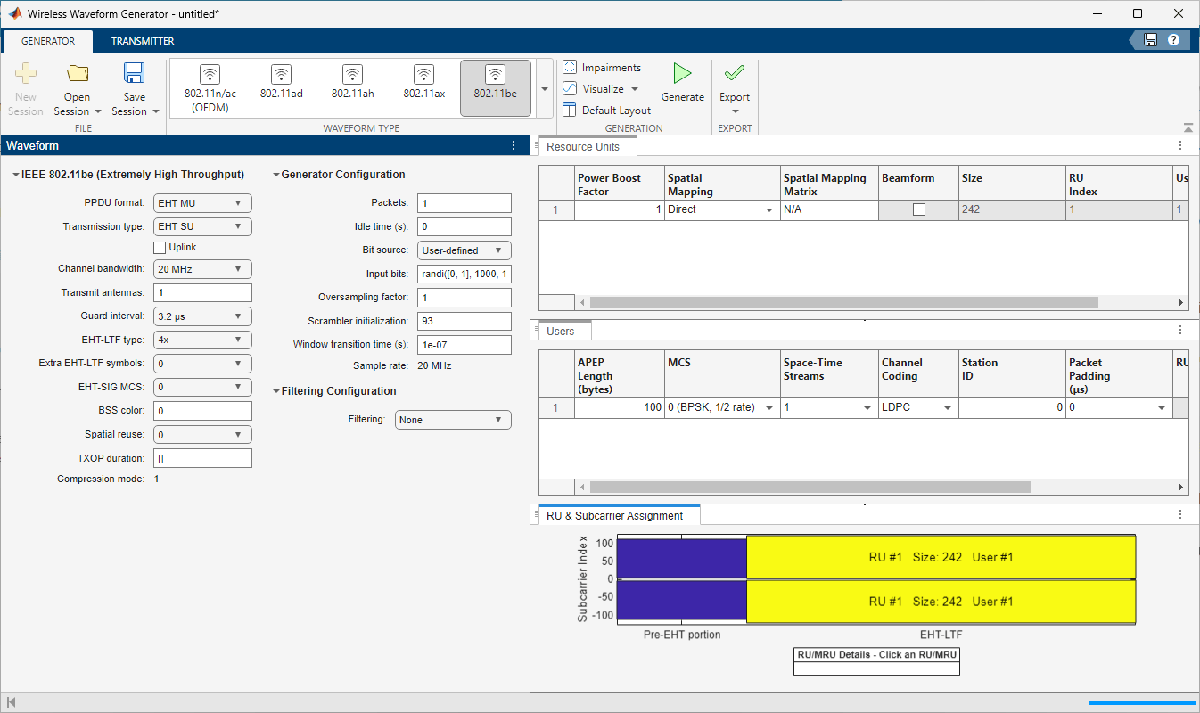
Select PHY Format
In the Waveform Type section of the app toolstrip, select 802.11be to set the PHY format for waveform generation to IEEE 802.11be.
Set Transmission Parameters
In the Waveform pane, set these transmission parameters:
Transmission type —
MU-MIMOChannel bandwidth —
40MHzGuard interval —
3.2μsEHT-SIG MCS —
3
In the Users pane, you can customize the modulation and coding scheme (MCS) for each individual user. In the MCS column of the table, selects 0 (BPSK,1/2 rate) for the first user, 1 (QPSK,1/2 rate) for the second user, and 3 (16-QAM,1/2 rate) for the third user.
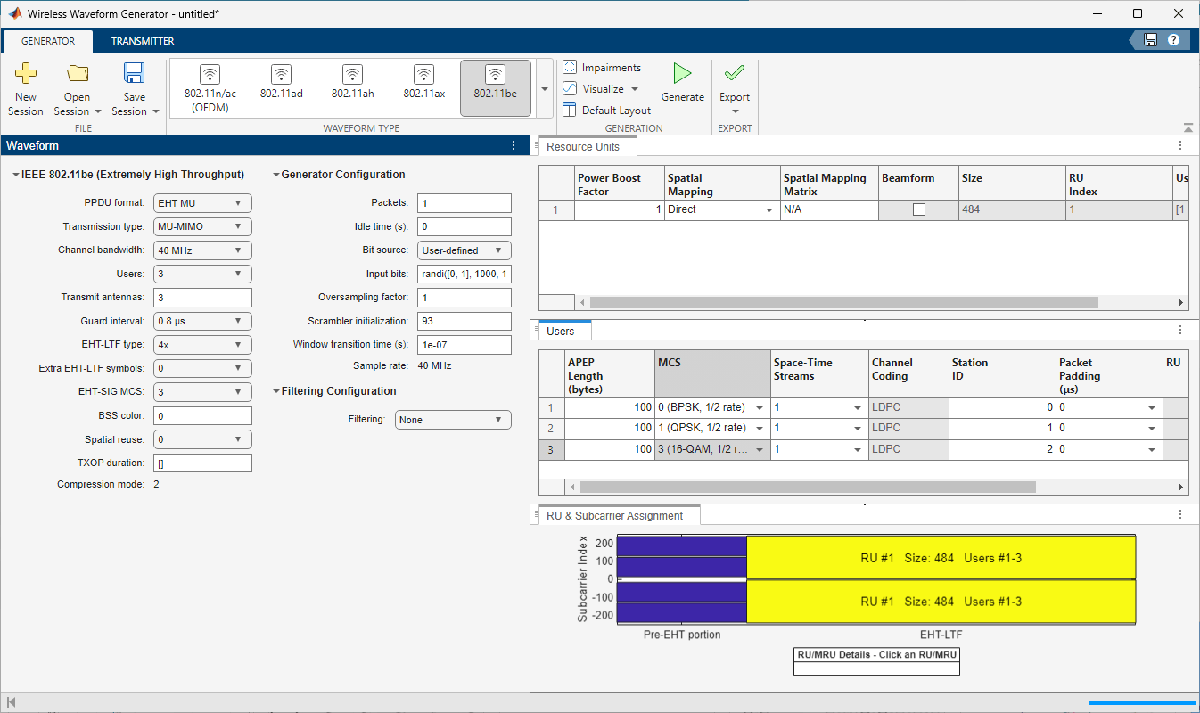
Add Impairments to Waveform
To simulate real-world conditions, add impairments to the waveform. In the Generation section of the app toolstrip, select Impairment. Then, in the Impairment pane, select AWGN to introduce additive white Gaussian noise (AWGN) to the waveform, and set its signal to noise ratio (SNR) value to 5 dB by specifying SNR (dB) as 5. Then, select Frequency offset and set Frequency offset (Hz) to 15 to simulate slight variations in the carrier frequency, mimicking a real-world signal.
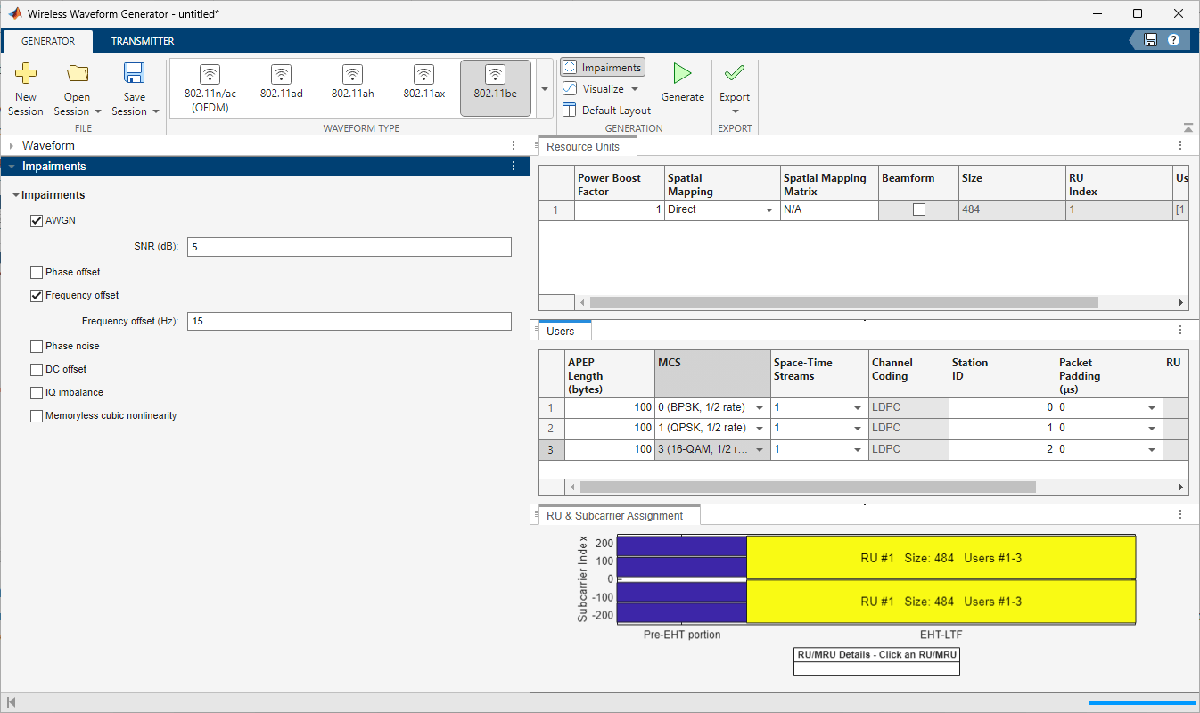
Generate and Visualize Waveform
In the Generation section of the app toolstrip, click Visualize and select Time Scope and Spectrum Analyzer. Visualize the waveform by selecting Generate. The lower-right pane shows the selected visualizations on individual tabs.
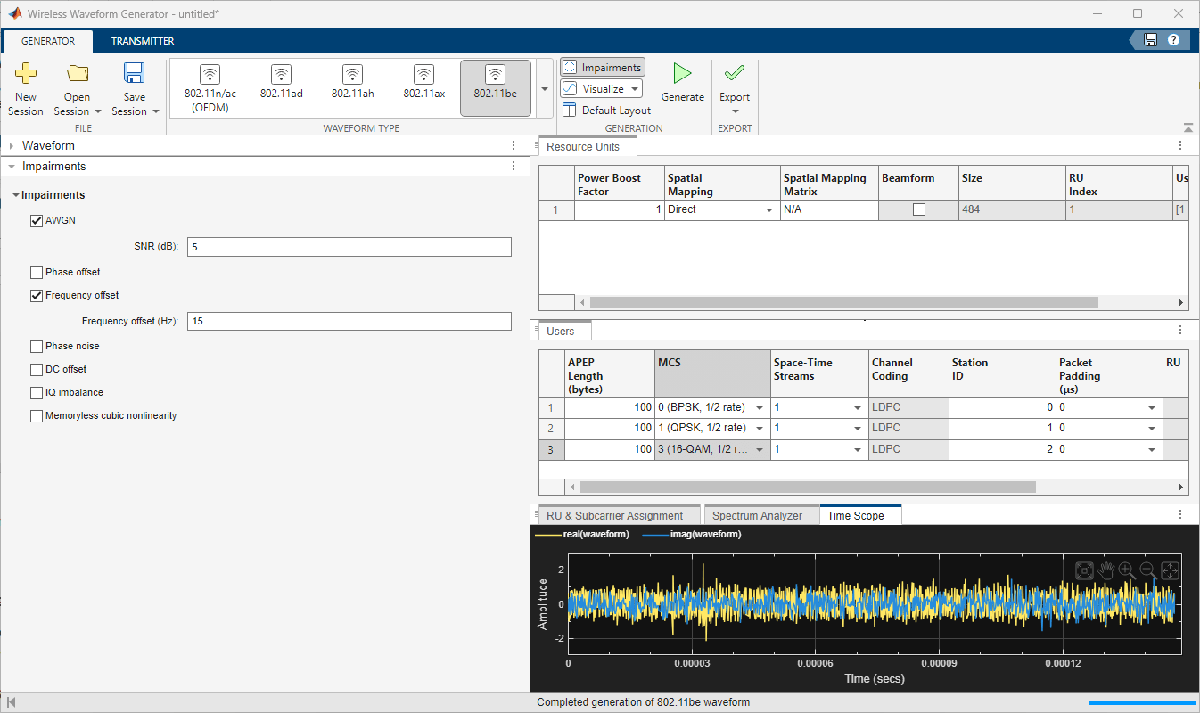
Export Generated Waveform
Save the waveform to a MAT file by selecting Export, then Export to File, and select Export to MAT file, with metadata.
Analyze Generated Waveform
Next, analyze your generated waveform by using the WLAN Waveform Analyzer app.
Open Wireless Waveform Analyzer App
On the Apps tab of the MATLAB® Toolstrip, under Signal Processing and Communications, select WLAN Waveform Analyzer. This opens the Wireless Waveform Analyzer app configured for WLAN waveform analysis.
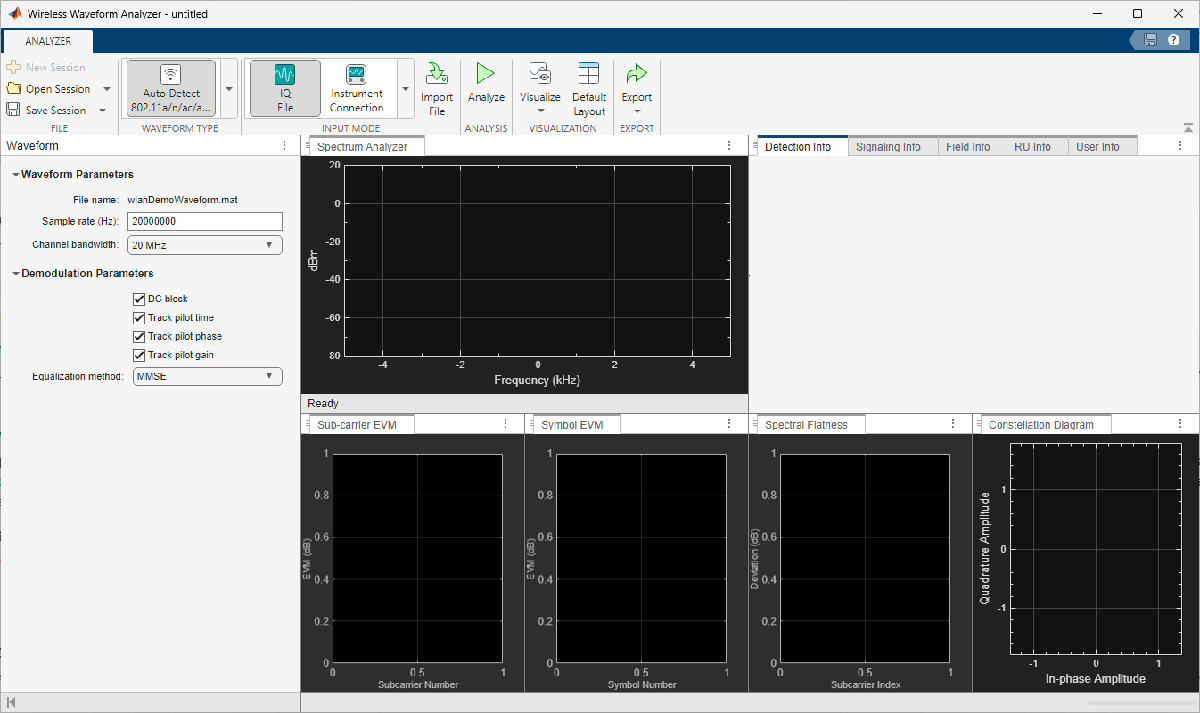
Import Generated Waveform
On the app toolstrip, in the Input Mode section, select Import. In the dialog box, select the file that contains your WLAN waveform with a PHY format IEEE 802.11be™ and a sample rate of 40 MHz. The Wireless Waveform Analyzer app automatically updates the File name parameter in the waveform pane. The app also updates the Sample rate (Hz) parameter because the selected file contains sample rate information, equivalent to 40 MHz.
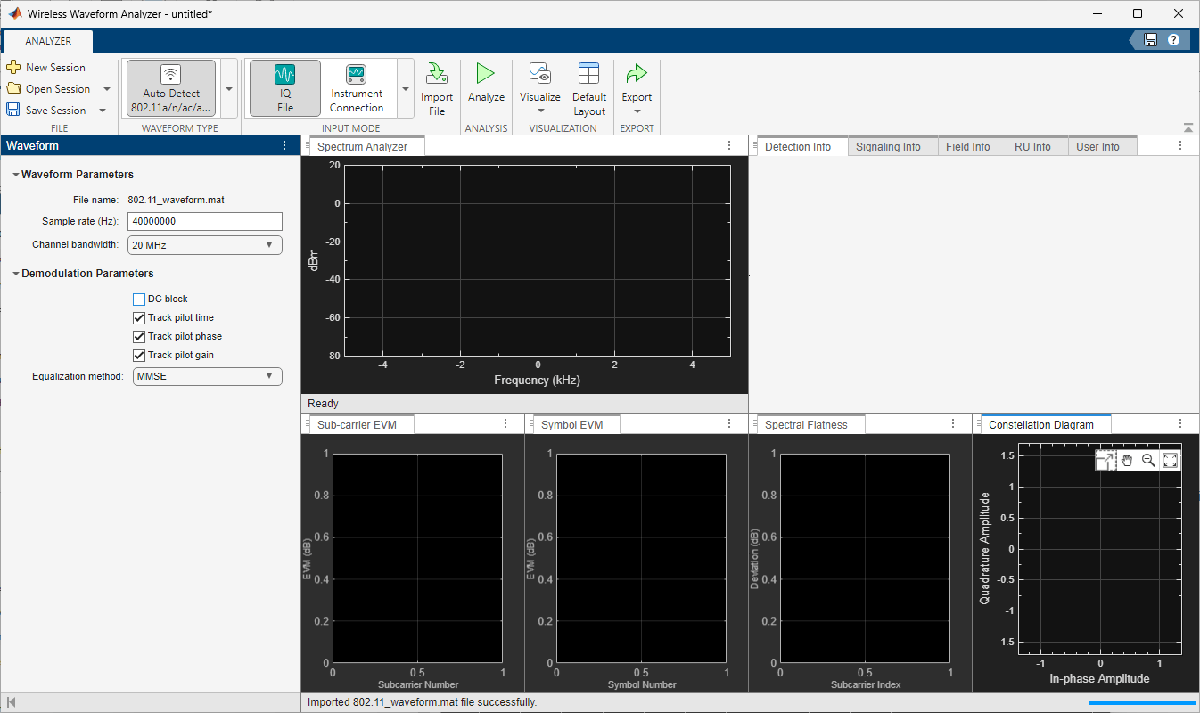
Regardless of the file selected, you must manually update the Channel bandwidth parameter. Set it to 40 MHz. Note that the value of the Channel bandwidth parameter must be less than or equal to the value of the Sample rate parameter.
Set Demodulation Parameters
In the Demodulation Parameters section of the Waveform pane, clear the DC blockTrack, pilot time, Track pilot phase, and Track pilot gain parameters. Set the Equalization method parameter to ZF to enable zero-forcing.
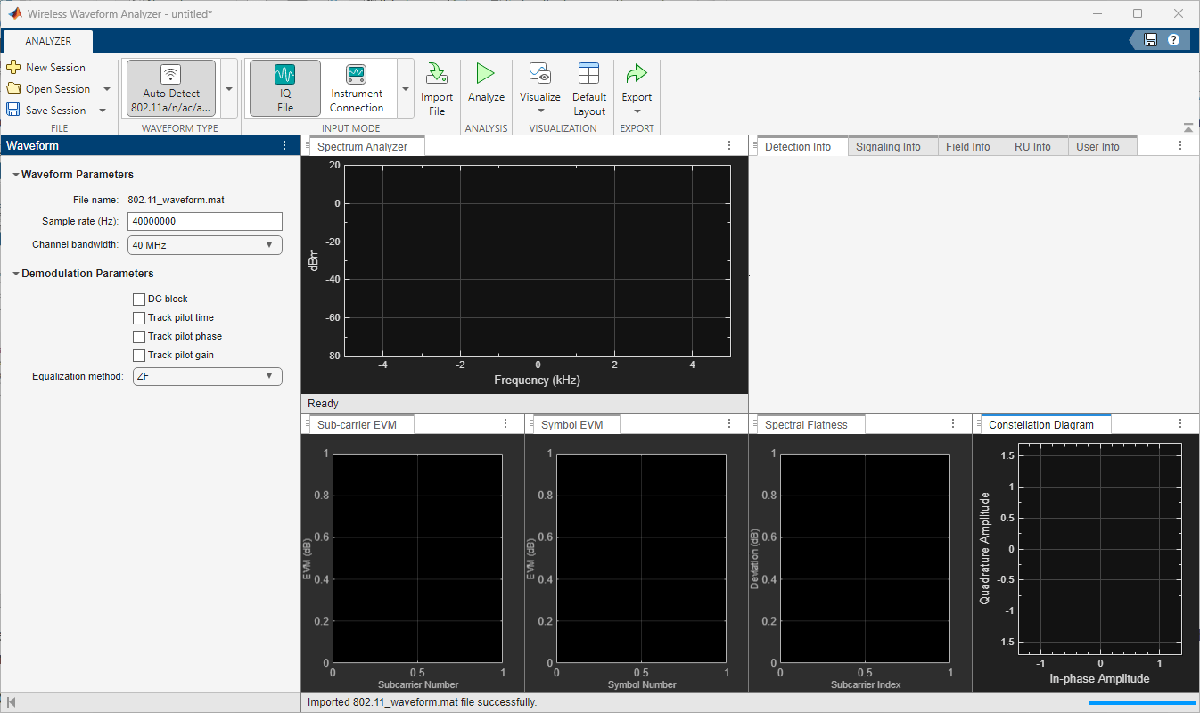
Analyze and Visualize Results
On the app toolstrip, select Analyze. By default, the app enables all visualization options. To remove a visualization option, on the app toolstrip, select Visualize, and clear the visualizations you want to remove.
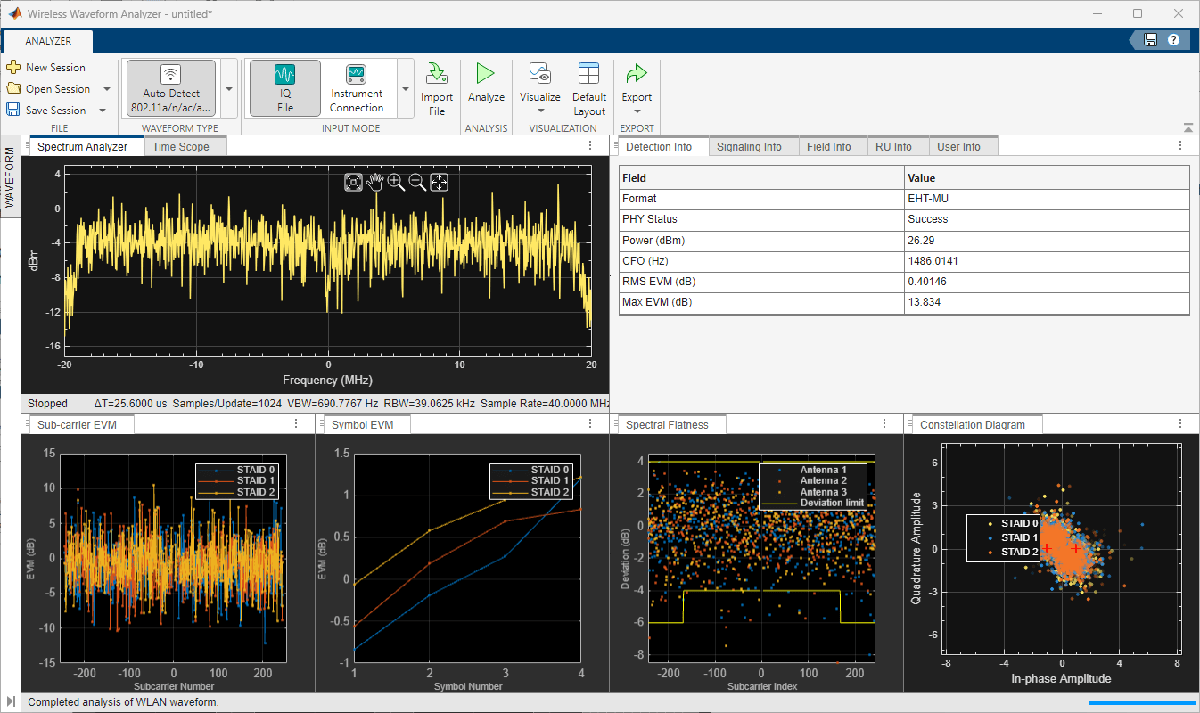
In the top-right pane, select Detector Info tab. This table shows that the Wireless Waveform Analyzer app has successfully detected the physical protocol data unit (PPDU) format of the waveform as EHT-MU.
Export Post-Simulation Results
On the app toolstrip, click the top part of the Export button to export the post-simulation results to the MATLAB workspace. If you click the bottom part of the Export button, you can choose to export the post-simulation results to either a workspace variable or a MAT file.